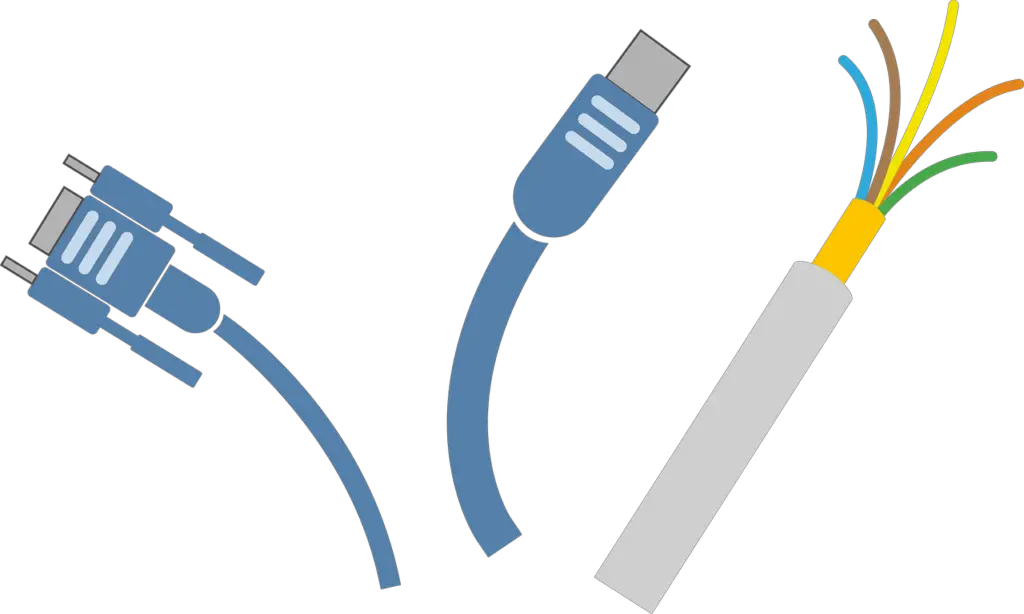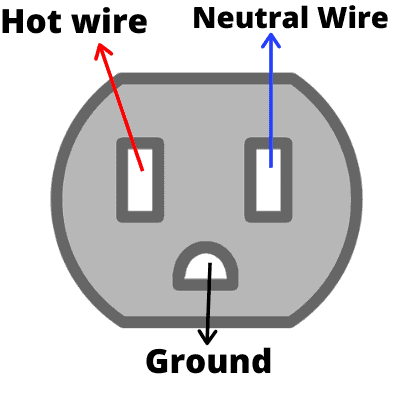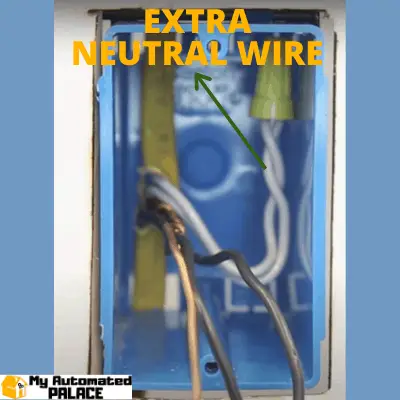
What is a neutral wire? Why do I need it for my smart home?
Those are common questions that you’ll do to yourself once you start automating your home. And it’s because we buy these beautiful Wi-Fi Switches on Home Depot or through the internet and we get stuck in the installation.
But don’t worry, in this article, we will dive deep into some electrician skills for you to learn how to solve this little issue
What is a neutral wire?
In an electrical circuit, a neutral wire delivers the remaining power that was left after your smart switch or any kind of appliance draws current, back to the transformer outside your house. It is a path created to facilitate that residual current goes easily back to the energy company.
This wire is designed to complete a full electrical circuit in your house.
Without one, any of your smart devices or household appliances will work at all!
Inside a common wall box, you easily find most of the time three cables:
- Hot wire: Commonly coded with red color at least in the U.S. Basically is the first path that the electricity takes from the transformer outside your house until any kind of electrical device connected to the circuit.
- Neutral wire: Once any type of your household appliances draws current from the electricity company A.K.A the transformer outside, there is a residual current that needs to go back! And this wire is guilty of it
- Ground wire: In case something terrible happen with your switch, fridge, or any device, the Ground wire will redirect that current directly to the source, avoiding an accident. If you’re lucky enough you won’t use this cable never in your life.
Below, please see these images to fully understand the location of each of the cables that I explained above:


Alright, now that we understand what is the actual definition of these wires, we can continue to deep diver into installation and more!
The fact that most electricians say that your wall boxes don’t have a neutral wire is a bad misconception that confuses a lot of people.
But from an engineering point of view, your house needs to have it otherwise you won’t have electricity at all!
How to identify if I have an extra neutral wire
As I told you earlier, all wall boxes have a neutral wire.
What you are looking for is an extra neutral wire to connect your smart switch to it.
This extra neutral wire is connected to the Neutral bus and it will have constant current flowing through it.
So, if you remove your old switch and you find only three cables like this:

You don’t have it and you need to install it whether it’s you or a good electrician that actually knows what he’s doing.
But if you have this:

You’re all set! And I hope that is your case.
How to install a neutral wire into a regular wall box
You may be wondering, I bought a smart switch or any kind of smart gadget that in the installation manual tells me that I need to connect it to the neutral wire so it can work all the time for its smart features!
But you came across with the wall box above without knowing what to do.
First, let me tell you that even though you have a neutral wire, you can’t connect your smart switch to it.
Why? Because this neutral wire is part of the total electrical circuit that runs into your home.
And once the switch is on, it closes it to let the residual current go back to its source.
But, and here’s a big one, if the circuit isn’t completed, that neutral wire specifically won’t have any type of electricity running through it.
Because the current takes the easiest path always and it will go back to the transformer.
So, if you want to connect your smart switch to your neutral wire, sadly you’re going to need to install a third wire that is fed with electricity.
And how do you do it?
This third cable will have to go the neutral bus on your energy income panel outside, all the way down to your regular wall box.
And How you identify it?
There are two options:
- Some electrical income panels in your house are labeled correctly. Try to look for the neutral Bus
- You have to check it using tools
If your option is number two, you need a current clamp to measure which bus has remaining current going back. Nothing fancy, you can go as high as a Fluke or you can just go for a simpler one.
Normally better models are designed for industrial use, but for your home, it’s more than enough this one.
This process sounds hard but it’s not. You just need to know where to go.
Just put the current Amp around only one cable at the time and check if it has current measurements.
Keep in mind that the bus you are looking for is the one that is sending electricity back to the transformer!
It should be oscillating because it depends on how much current is being drawn from your connected devices. It will vary, but if it’s showing you information, that’s your neutral bus.
To avoid confusing it with the hot bus, you have to measure how much current is going on both. If you find that one of them has lower readings, that’s the neutral bus that you need.
Next, you would need to connect a cable with the same reference and diameter used on your wall box to that neutral bus all the way down to your wall box.
This is where the hard work comes. You will have to root that cable using the cables that are already in place in your receptacle.
Just tie up a strong cable to the hot or neutral wire (see the image of the wall box above for reference) on the side of your wall box and start pulling in on the side of your energy income panel.
Once the cable is out, tie the new neutral wire to it and start pulling back in!
A quick helpful hack: Add liquid Vaseline to those cables and inside the tube where they are going to pass.
It can be very hard sometimes to do that installation if both cables get stuck.
With sufficient liquid Vaseline and strength, both cables will come out on your receptacle.
Now, you have a neutral wire that isn’t part of the whole circuit of the house.
When you connect your smart switch, dimmer, or whatever device you have in mind, it will have a constant current to feed it.
A word of advice: No matter which type of smart device you’re trying to install on that wall box. If it’s not properly wired, it won’t work at all!
So be 100% that you have the neutral wire up running and all the connections are tied enough.
Electricity can be dangerous
Now, the process that I gave you above requires that you have some serious handyman skills to pull it off! And of course, the right tools.
And electricity is obviously dangerous for you, for your house and your neighbors!
So, if you want to be cautious or If you don’t feel comfortable installing these cables by yourself, you can always call an electrician for the proper installation.
Just make sure that the guy knows what is a neutral wire.
Because in simpler residential circuits, the installation could be easy.
But if your house is fairly new, the neutral wire bus is protected with circuit breakers and can be tricky to identify it.
How to identify a neutral wire with a multimeter
A multimeter can be a useful tool for you in this project.
As multimeters can’t measure current on wires, what you could actually measure is the location of the cables that go to your energy income panel.
If you are lucky enough to find the white cables twisted together covered with a plug you could do:
- Remove the cover of the white cables
- Put your multimeter to measure continuity.
- First, identify the regular neutral wire using the images posted above.
- Check for continuity of that cable all the way down until the neutral bus.
- Once identified the neutral bus, check continuity between it, and the white cables twisted together in the back of your wall box.
- If the multimeter is beeping, there you have it, that is your neutral wire.
Now, if you don’t have the white twisted cables, you most likely don’t have an extra neutral wire.
What you could do with your multimeter is to check which one is the neutral bus in the energy income panel and install it using the steps that I showed you above.
Common misconceptions about what is a neutral wire
The neutral wire is easily confused with the ground cable because of numerous factors:
- Color cables: In a standard fairly new house, the color used for hot wires is white, which is the color used for neutral wires. At Least in the U.S. but it varies depending on the state you’re living, and that’s one of the biggest reasons are so easily confused. Most houses and apartments aren’t built with the same regulations making electricians go nuts!
- Old Houses Vs New ones: If your house is fairly old (20 or 30 years) you may not have the extra neutral wire.
- Wrong information: Some electricians tend to think that the ground cable is the same neutral wire. A mistake that can cause you a damaged smart switch or smart light. As a matter of fact, I have heard electricians with years of experience having this false information with them!
That is why it is so important to hire a good one if you want to outsource this installation. Not to scare you or anything like that, just make sure the guy knows his $%&#!
The Ground rod is not a neutral wire!
In common residential circuits, there is a ground rod installed in the ground that is connected to the hot bus.
Many electricians tend to think that when there is a ground fault, electricity goes through that rod and into the earth.
But you need to remember that electricity takes the path with the least resistance and to its source!
It just doesn’t go into the earth
As there is a ground rod in the transformer there is a potential path where the current could go.
But the resistance is so high that it is very unlikely to happen.
What actually happens is that the ground rod is also connected to the source of the current.
That is why it will take the easiest path back to the transformer
But, what about lightning?
Well, in this case, as electricity tends to go to its source if by any chance the electricity cables got struck by a lightning, all that powerful energy will go into the earth instead of your house’s circuit.
See? The ground rod function is totally different thing from the neutral wire.
What is the best cable for your neutral wire?
On this front, your safest bet is to find the same cable that is used on your wall box for the new neutral wire.
Without going too deep into this, the cable should have a protective plastic Sheathing and it should hold some good amps.
If you want to learn more about what is the best neutral wire for your house, check this article They have an in-depth guide of all the types of wires used!
Why do smart switches need a neutral wire?
Smart switches, dimmers, and so on, require a neutral wire installation so they can be energized all the time.
With that, all the smart features will be ready to work even though are not activated.
Most useful smart home technology networks such as Z-Wave Plus, Wi-Fi, and even Bluetooth require constant energy to work!
Sure, your device will turn on without the neutral wire, but it won’t work properly and you just wasted your time!
Can I connect my already existing neutral wire to the smart switch?
The neutral wire that is inside your wall box is not energized because it is a dead-end for electricity. You won’t have energy flowing through it unless the switch closes the circuit and sends the remaining current back to the source.
Conclusion
There is a lot behind of what is a neutral wire!
But if you read this through, you now know all the reasons why it is such an important part of your smart home.
Wrong information and a lot of hard work could be in the middle of you and your smart switch.
But nothing is impossible to solve having proper information and a good pair of hands!
